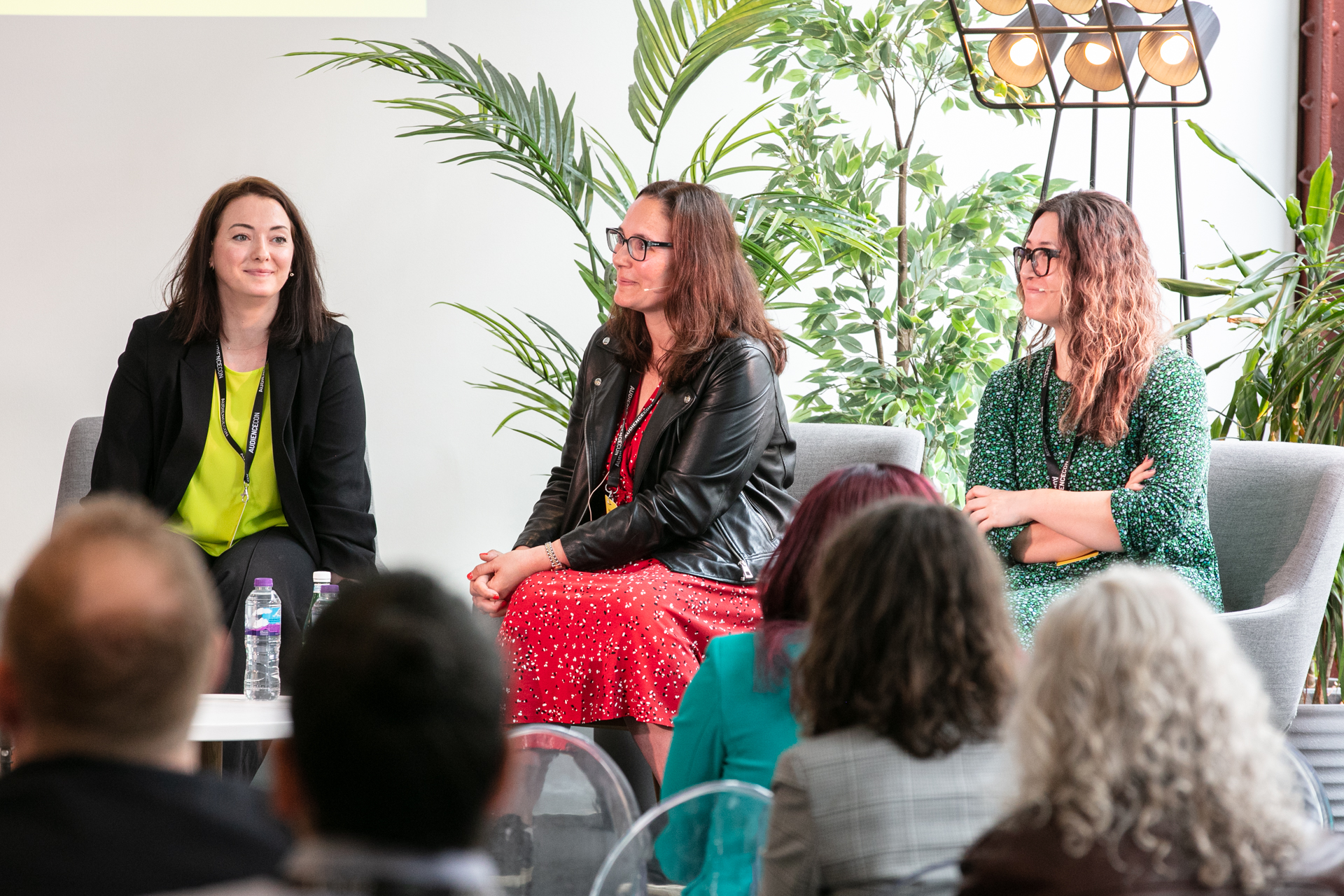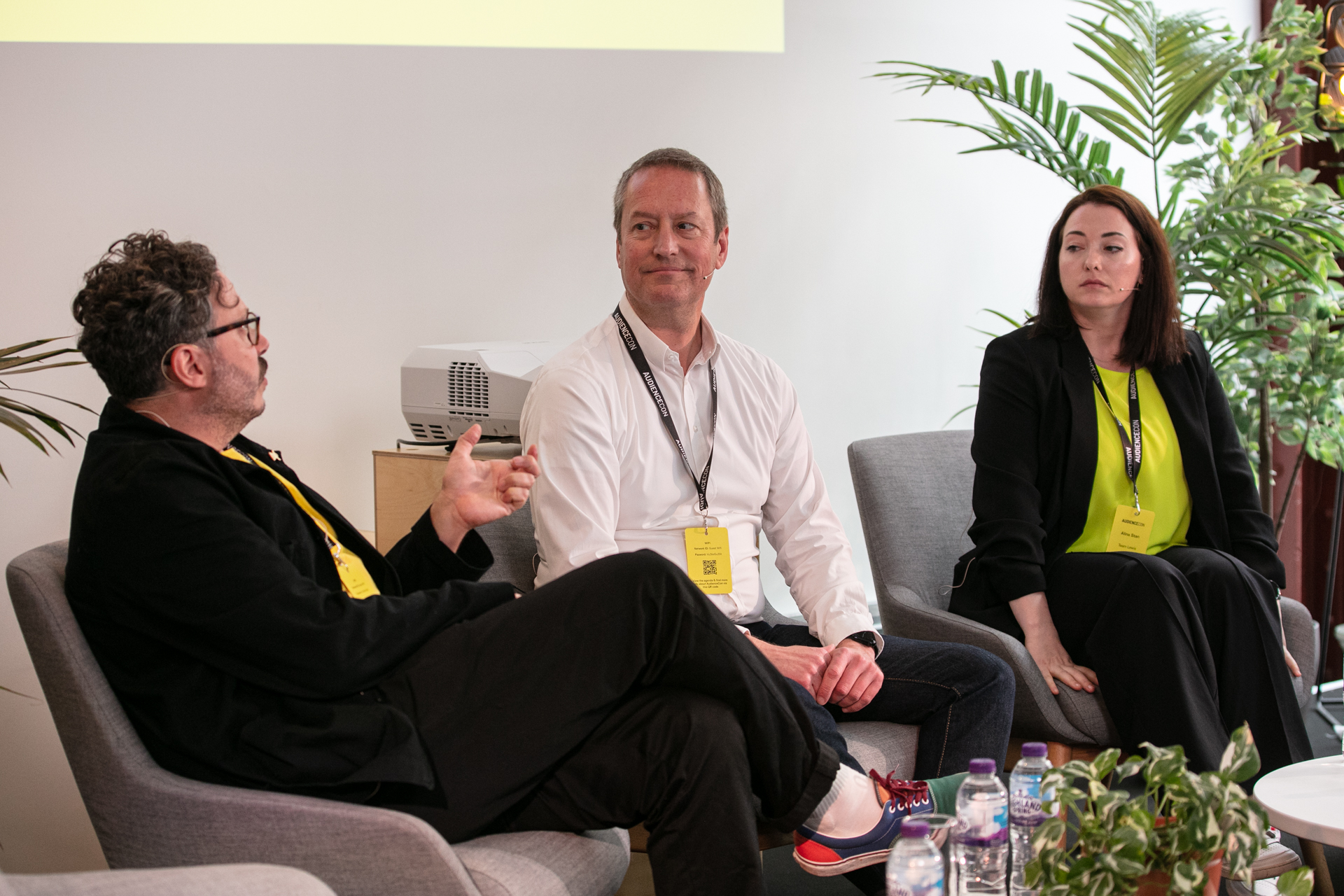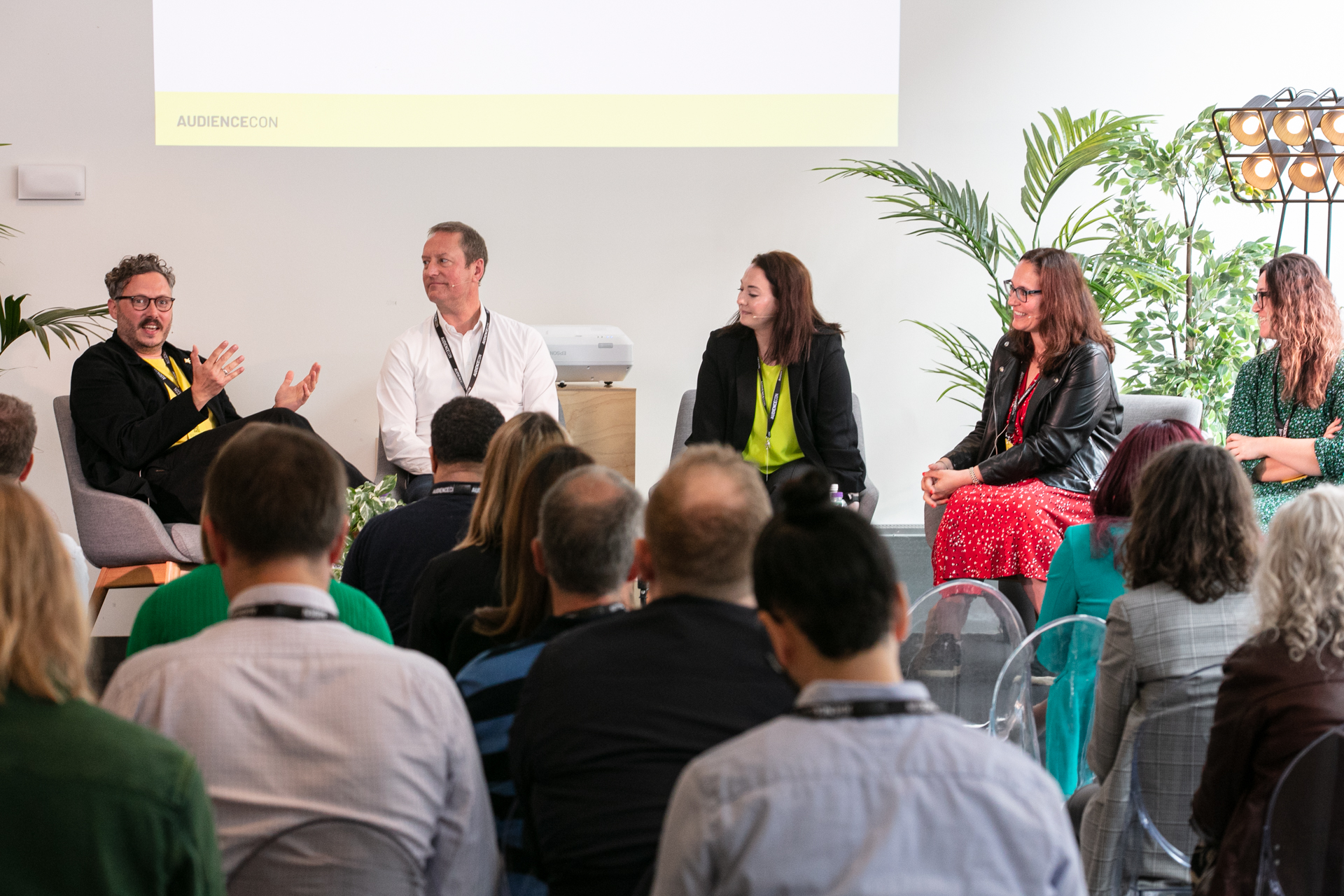2. Decoding Digital Signals: Demystifying the Fundamentals of Audience Intelligence
Table of contents
With Virginia Alvarez (Wunderman Thompson Data), Francesco D’Orazio (Pulsar), Mike Stevens (Insight Platforms), Rachael Lake (m/SIX), Alina Stan (TEAM LEWIS)
What does it really mean to "know" your audience? And what happens when we mistake data for understanding?
In a digital landscape where insight dashboards are plentiful but attention is scarce, the fundamentals of audience intelligence are easy to lose sight of. From social listening to segmentation tools to behavioural analytics, the insight industry is rich in signals - but are we listening in the right way? We need to examine if we're doing enough with the signals we pick up.

Watch the full recording below.
At AudienceCON, a diverse panel of strategists, researchers and technologists came together to lay out what’s working, what’s broken, and what needs building next. From foundational definitions to dream-state wishlists, this session offered a thought-provoking reset on how to think about audience intelligence today.
Let's dive into what we learned.
Audience intelligence is a mindset, not a data source
Asked to define audience intelligence, the panel gave a refreshingly consistent answer: it’s about listening. But not just passive listening, it’s about active, intentional engagement with the full spectrum of what audiences are expressing and doing. That means looking beyond survey responses or social commentary to also include what people search for, which creators they follow, what they like, and how they behave across platforms.
But listening alone isn’t enough. Audience intelligence requires zooming out from the moment-to-moment noise to recognise larger behavioural patterns. It means fusing attitudinal insight (how people think and feel) with behavioural data (what they actually do), and interpreting those signals with cultural and emotional context in mind.
Most importantly, it means staying curious. It’s not about measuring everything, it’s about understanding the "why" behind the "what," so that brands can make smarter, more human decisions. As Francesco D'Orazio says, "audience intelligence overlaps massively with social data, but it's not just social data. It's a much bigger toolset - it's about combining methodologies."
Don’t confuse access with understanding
There’s no shortage of data. But that abundance has created a new problem: overwhelm. As Alina Stan says, a danger with data overwhelm is that "you forget what your goal is. And you just spend so much time trying to figure out what it is that you're trying to do."
Insight professionals are spending more time wrangling dashboards than interpreting signals. Methodologies aren’t standardized. Data taxonomies differ wildly. And many platforms operate as black boxes, making it harder to assess reliability or trace insight back to source.
The panel was clear: organisations need better internal processes to cut through the flood of options and focus on what actually drives action.

Hypotheses are helpful, even in open-ended work
Just because audience intelligence allows for more exploratory research doesn’t mean strategy should be aimless.
The panel made the case for starting with a working hypothesis, even if it’s rough. This gives focus, frames what you’re looking for and helps steer away from the data overwhelm we mentioned above. And, perhaps most importantly, it helps reduce confirmation bias when navigating open datasets like search and social.
(To read some of Pulsar's deep dives into large datasets, click here.)
Without a hypothesis, there’s a risk of finding what feels interesting rather than what’s actually useful. Coming from a research background, Fran D'Orazio tells us that "In traditional research, you are always led by a research hypothesis - you need to design it in a way that matches what you're trying to answer because you move from the ground up." However, often when people approach audience intelligence, "there's this idea that you can discover the unknown unknowns just by having all data kind of like clustered and mapped and thrown at you. And so very often people forget that even if you do that, you still need to go in with a hypothesis that you wanna validate or disprove."
Choose your tools wisely
Many tools are good at giving you 'what', but not the 'so what.' The panel stressed the need to avoid being seduced by platforms that overdeliver on data but underdeliver on actionability. Alina Stan tells us that with some tools out there, "you get so much data and you get a lot of, this is what happened, this is where they are, this is what they do." But this opens more questions than it answers: "How do I take it forward? What do I do with it? Do I need to go into more detail? Do I need other platforms?"
The panel argued that we need to focus on the objective at hand. Not every job requires every tool. Know your goal, then build your approach around it.
This means being discerning with which tools you use to reduce the amount of noise and confusion that can come with bouncing around platforms.
Panellists had a shared frustration: the lack of a unified platform that brings together audience data into one, cohesive view. Fran D'Orazio tells us that creating a unified platform needs unique solutions, and that "all those solutions are actually black boxes. That ladders up to the platforms that generate that data because those platforms are black boxes themselves, for many reasons."

Audience intelligence is best when it’s blended
The best results come when audience intelligence and traditional market research work in tandem - not as siloed projects, but as cohesive, complimenting research strategies. Viriginia Alvarez tells us that her approach is to "go into social, to know what they do, what they search, what they follow, but then follow up, you know, with qualitative, quantitative techniques to understand the extra information."
Audience intelligence is great at capturing in-the-moment behaviours. Market research excels at understanding deeper motivations. Together, they form a fuller picture: one that’s both real-time and reflective.
Rachael Lake adds that where she's seen this approach work well is when unpacking a customer journey: "traditional market research is quite good at identifying the big moments - then where audience intelligence is great is getting into that granular detail."
But to get there, organisations need to bridge tools, budgets, timelines - and most importantly, teams. Having a team of well-balanced, differently-minded individuals that can bring together a cohesive view is the key to having an audience-first, human-centric approach that can fully capture the full picture.
Dreaming of a better future
When asked to imagine the ideal audience intelligence solution, the panel had plenty of ideas. Some of their many dreams included:
- A tool that aggregates behavioural, attitudinal, and cultural data across all sources
- Interfaces that reduce the need for data wrangling and amplify interpretation
- Standardised methodologies for merging social data with qualitative insight
- An AI "co-pilot" that helps build hypotheses and frame better questions
The ultimate goal? A system that frees up human analysts to focus on creativity, judgment, and decision-making - not data clean-up.

Final thoughts
Audience intelligence isn’t just about gathering more data. It’s about asking better questions, making sharper connections, and using those connections to move with clarity.
This panel emphasised that you don’t need to see everything to understand something. But you do need to know what you’re looking for - and what to do when you find it.

